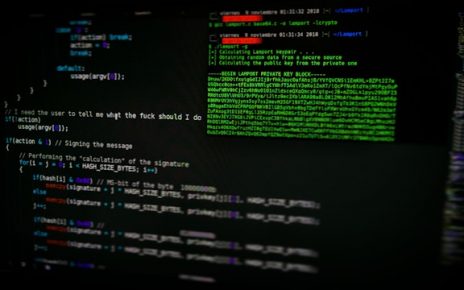Important Note: This article is part of the series in which TechReport.us discuss theory of Video Stream Matching.
This step performs the following:
From
input video(s) extracted the frames, which are called mean frames.
These
mean frames are store on hard disk, used for decision making.
Extract
the features from mean frames.
3.2 Stages of Image Analysis
Image analysis starts from input and last step before Computer vision process.
3.2.1 Preprocessing
When video get as input. It may source video or target video it consists on huge number of frames. Processing of these all frames is not possible. Because it required high processing speed and very fast systems. So only mean frames (Key Frames) takes for processing.
3.2.2 Mean frames
Key frame is the old terminology. Now it is replacing by mean frame. Pre processing is required to select only use full frame. For this select only those frames which representing a clip uniquely. For this extract the key frame or mean frame from video. Which posses the same distribution as whole clip or near to it.[6]
So mean frame selected first by using different mean frame extraction method.
3.2.2.1 Mean Frame Extraction
When video came as input, then system first read that video from desired location then save it on drive. Now select a feature which has the ability to define the frame uniquely.[6]
That feature will be help full in classification process. In that system select the histogram.
3.2.2.1.1 Histogram Feature
The histogram is applied on frames in the form of tiles. First divide the image in number of tiles which are not over lapping then calculate the histogram for each tile. After calculating the histogram store its values in column form. Each tile placed its values in one column respectively. [7, 8]
Histogram is calculated of an image in gray scale therefore it has 256 possible values which need to be reduced. These values can be reduced by selecting a use full bin number.
Bin number is the value which shows in how many part total intensity spectrum divided. This value is in the power of two. It reduced the number of data values and this is first step towards data reduction.
Mathematically:
B = number of bins .
I = number of intensity levels .
WB = Each window values
WB = I/B
For Number of possible windows per image must be in ideal form. Ideal form means image rows and columns are in the power of two. If image is not in the power of two then first convert it in to the power of two after that other processing start.
If rows % 2 == 0 and cols % 2 == 0
Then
Continue processing
Else
Apply Padding.
Number of Tiles per image is depends on the size of Tile. Size of the window also must be in the power of two. Like 2, 4, 8, 16, 32.
Greater the size of window Lower the quality of information. Smaller the size of window, greater the processing time. So this must be a suitable selection
WN = Number of windows
R = number of Rows of image
C = Number of Columns of image
SxS = size of each window
WN = ( R * C ) / S2
So total number of elements per feature vector is
TVH = Number of elements of feature vector
TVH = WN * WB
In this system data is sent back to caller module only in one column form.
For classification or for decision making like which frame needs to keep or which frame no needs to keep, KS Test apply. [9]
3.2.2.2 KS Test
The Kolmogorov-Smirnov test (KS-test) tries to determine if two datasets differ significantly. The KS-test has the advantage of making no assumption about the distribution of data. (Technically speaking it is non-parametric and distribution free.) [25]
In a typical experiment, data collected in one situation (let’s call this the control group) is compared to data collected in a different situation (let’s call this the treatment group) with the aim of seeing if the first situation produces different results from the second situation.
If the outcomes for the treatment situation are “the same” as outcomes in the control situation, we assume that treatment in fact causes no effect. Rarely are the outcomes of the two groups identical, so the question arises: How different must the outcomes be? Statistics aim to assign numbers to the test results; P-values report if the numbers differ significantly. Reject the null hypothesis if P is “small”.
The process of assigning numbers to results is not straightforward. There is no fairy god mother that can wave her magic wand and tell you if results are evidence for or against an effective treatment.
One simple strategy you might have thought of is surely dead wrong: try lots of different statistics and pick the one that reports want you want.
Every statistical test makes “mistakes”: tells you the treatment is effective when it isn’t or tells you the treatment is not effective when it is effective. These mistakes are not user-errors, rather the statistical tool –properly used and applied to real data– simply lies some small fraction (say a few percent) of the time. Thus if you apply many different statistical tests you are very likely to get at least one wrong answer.
Statisticians, of course, try to make statistics that only rarely (say 5% of the time) lie. In doing this they tune their tests to be particularly good at detecting differences in common situations. Used in those situations the tests may be the best possible tests. Used in different situations the tests may lie outrageously.
For example consider the datasets of two images, one is called control other image is called treatment:
controlA={0.22, -0.87, -2.39, -1.79, 0.37, -1.54, 1.28, -0.31, -0.74, 1.72, 0.38, -0.17, -0.62, -1.10, 0.30, 0.15, 2.30, 0.19, -0.50, -0.09}
treatmentA={-5.13, -2.19, -2.43, -3.83, 0.50, -3.25, 4.32, 1.63, 5.18, -0.43, 7.11, 4.87, -3.10, -5.81, 3.76, 6.31, 2.58, 0.07, 5.76, 3.50}
Notice that both datasets are approximately balanced around zero; evidently the mean in both cases is “near” zero. However there is substantially more variation in the treatment group which ranges approximately from -6 to 6 whereas the control group ranges approximately from -2½ to 2½. The datasets are different, but parametric approaches cannot see the difference.
Situations in which the treatment and control groups are smallish datasets (say 20 items each) that differ in mean, but substantial non-normal distribution masks the difference.
For example, again consider the data set of two images:
controlB={1.26, 0.34, 0.70, 1.75, 50.57, 1.55, 0.08, 0.42, 0.50, 3.20, 0.15, 0.49, 0.95, 0.24, 1.37, 0.17, 6.98, 0.10, 0.94, 0.38}
treatmentB= {2.37, 2.16, 14.82, 1.73, 41.04, 0.23, 1.32, 2.91, 39.41, 0.11, 27.44, 4.51, 0.51, 4.50, 0.18, 14.68, 4.66, 1.30, 2.06, 1.19}
These datasets were drawn from lognormal distributions that differ substantially in mean.
The KS test detects this difference, the mean does not.





